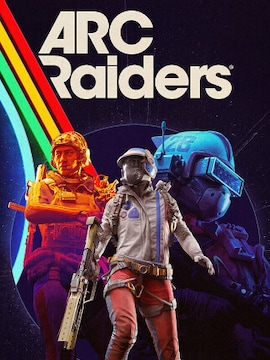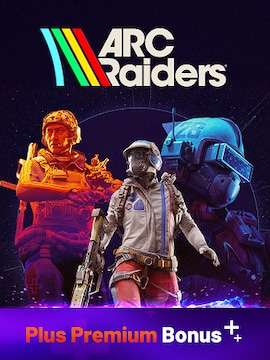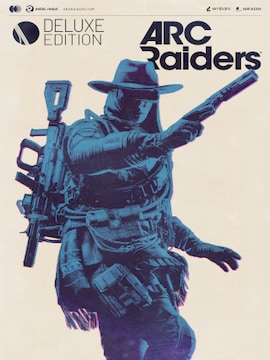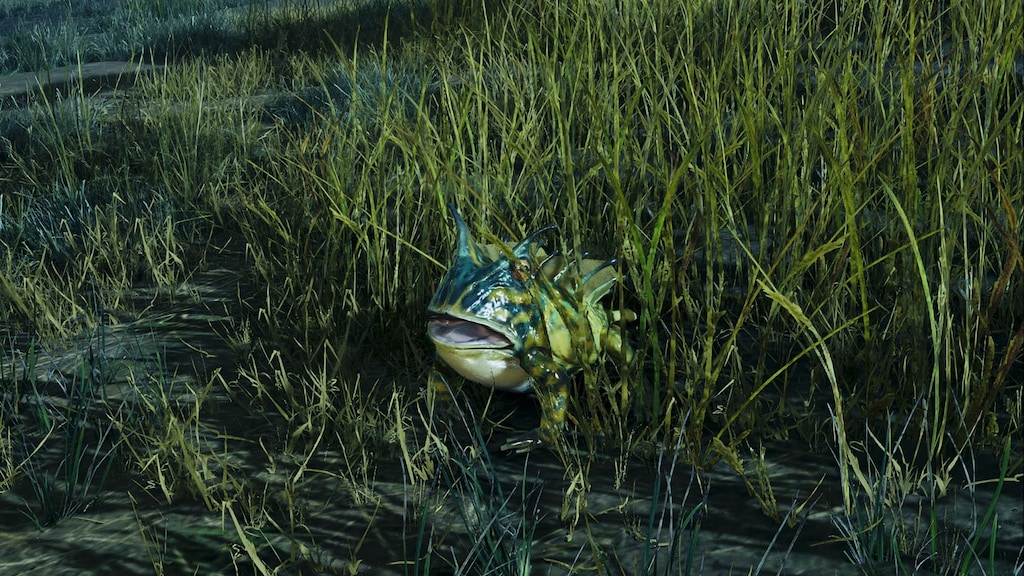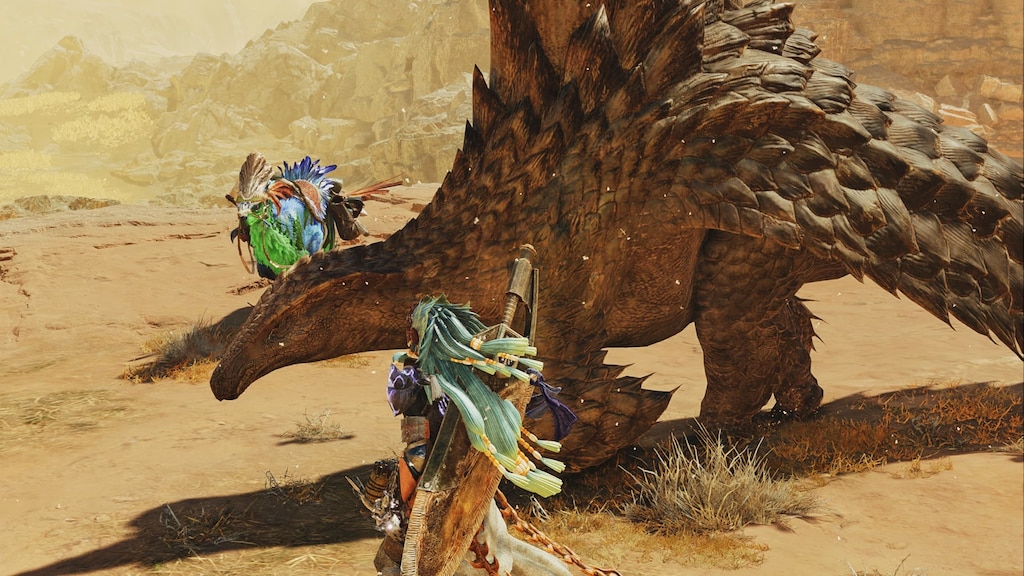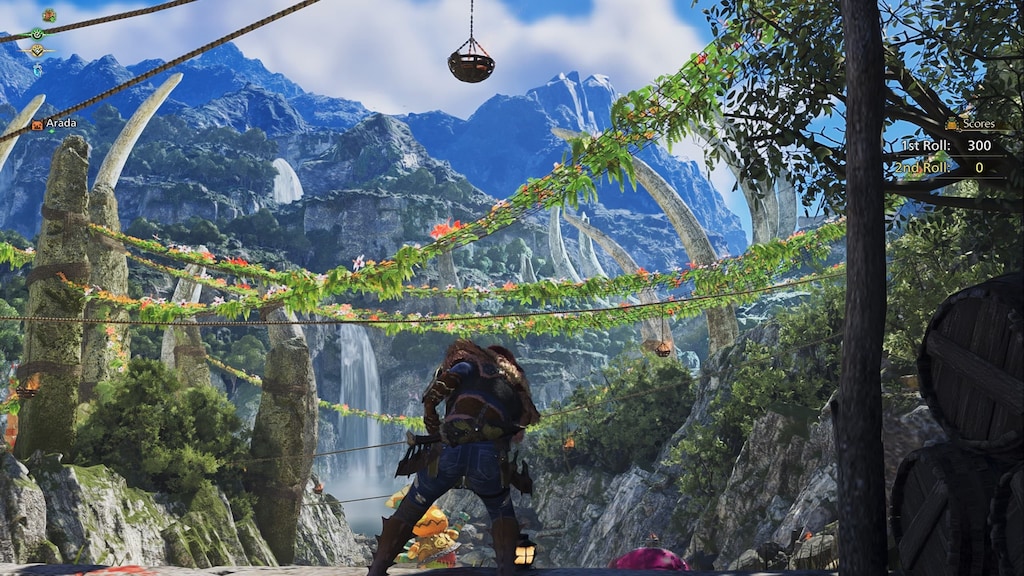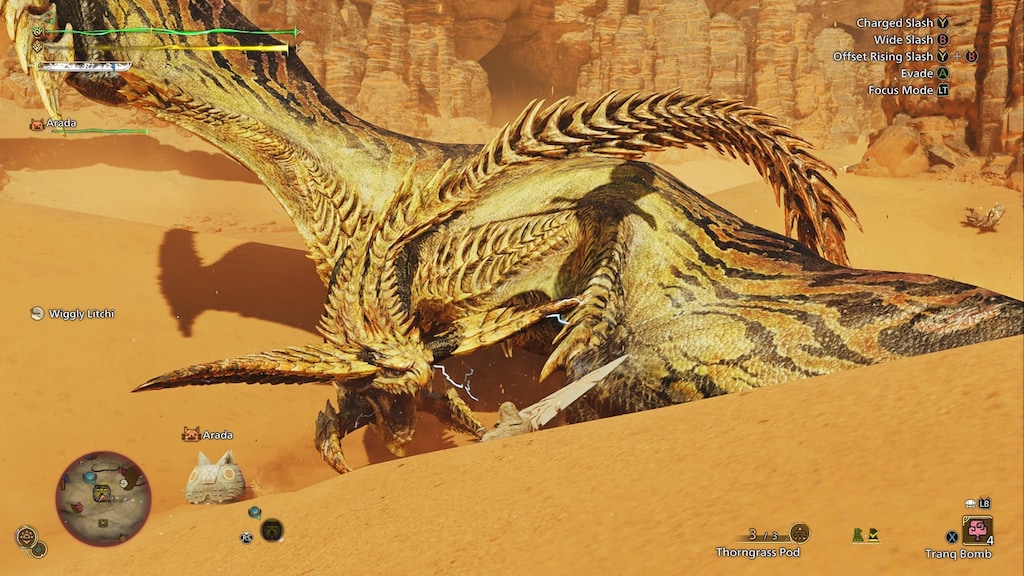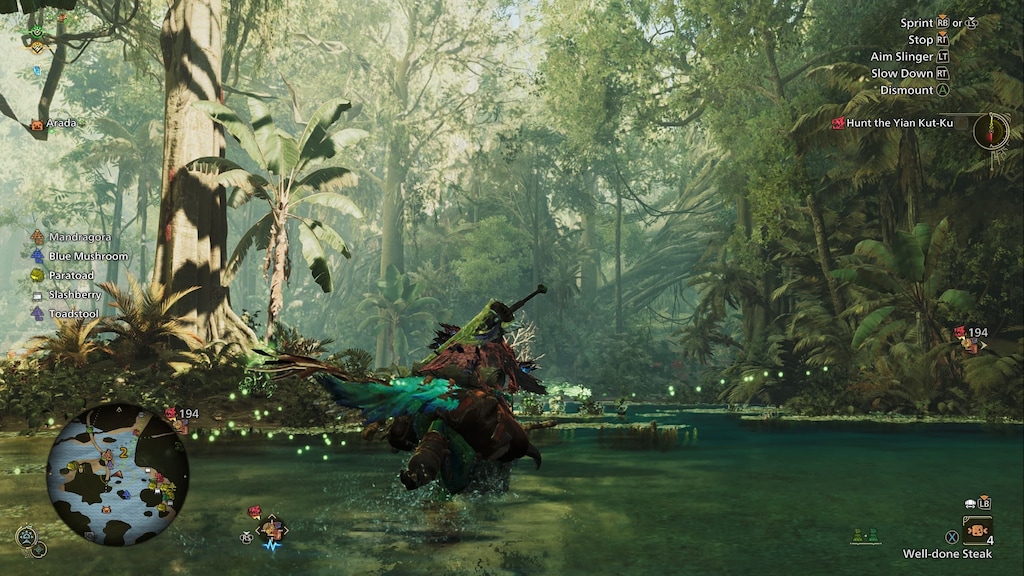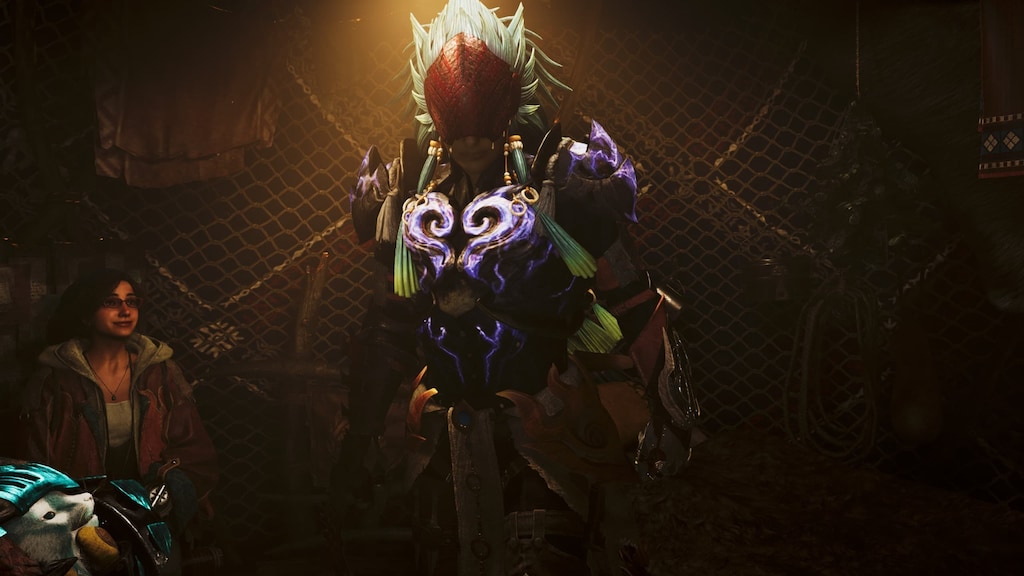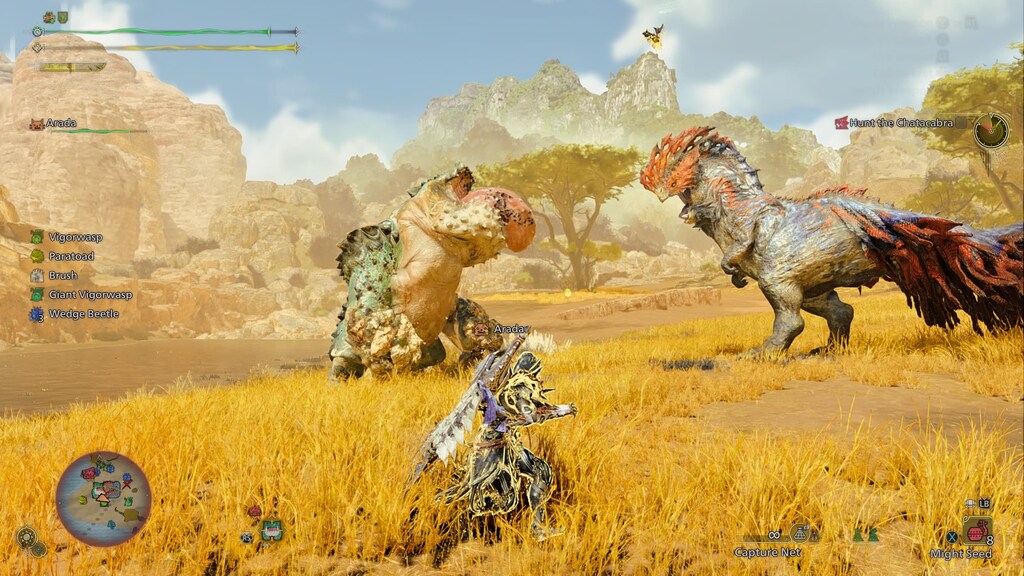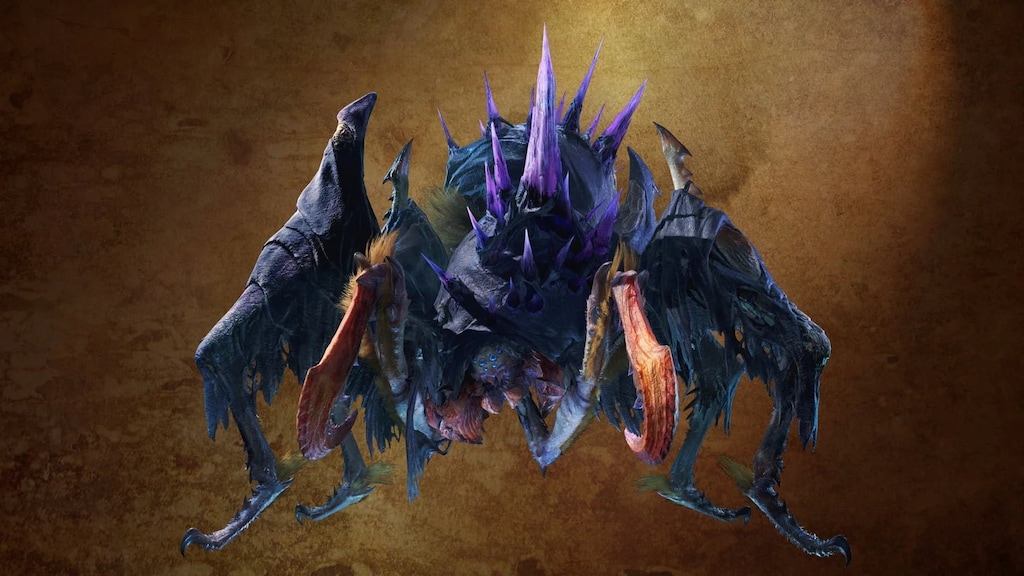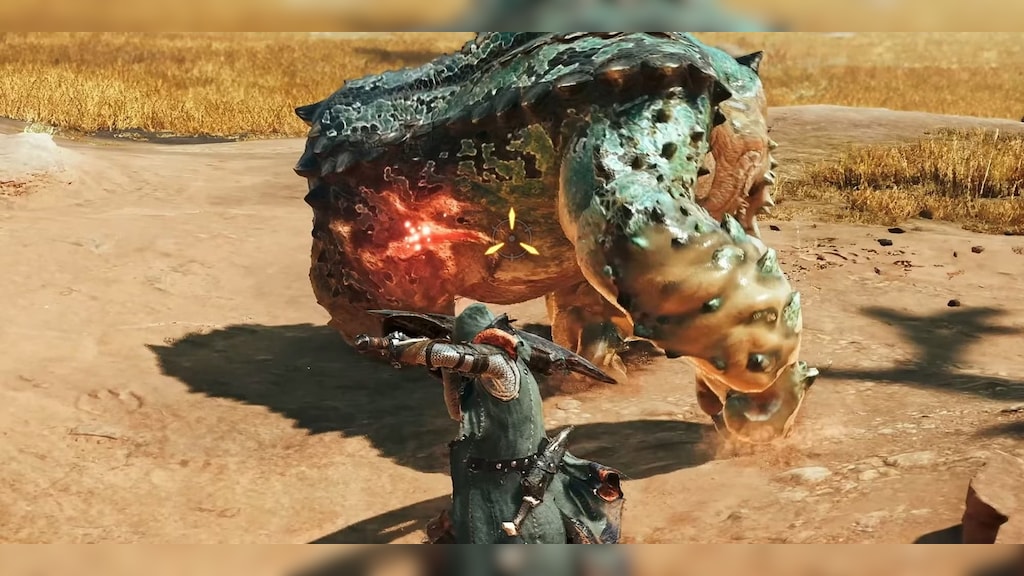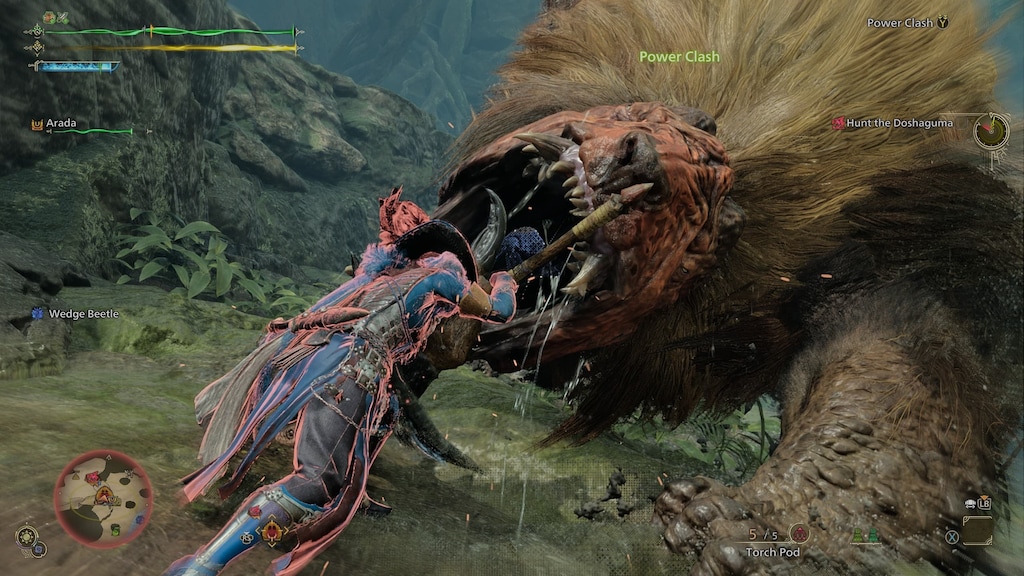Monster Hunter Wilds, the latest in a long-running series of games with the eponymous theme, launched in February this year. At the time of writing, it’s late July, almost half a year since release, and the second Title Update is a few weeks old. It might be a good time to try taking a look at where Wilds currently stands.
We’ll be comparing this specifically to Monster Hunter World and Monster Hunter Rise, as the other two traditional MH releases to arrive on PC.
We won’t be looking at the particulars, like the details of how each particular weapon handles, or going over new skills. Instead, it’ll be more of a bird’s eye look at the game, with its new systems, new ideas, and what effect they have on the experience, compared to the previous two entries.
Let’s begin the expedition, shall we?
First things first
Monster Hunter Wilds is great, but it does have its issues, all of which have been hotly debated in the online communities of the game since the beginning, and they are being actively addressed. So let’s address them.
Early on, MHWi (not to be confused with MHWI) caught a lot of flak for how easy it was compared to previous games, and there is some merit to this.
The Low Rank can feel like a bit of a “story mode”, especially since it’s where most of the plot happens. Thankfully, the difficulty goes up pleasantly once the High Rank begins, even if some say the difficulty of HR should have been what LR feels like. For such folk, updates bringing in Mizutsune, Seregios, Lagiacrus, and Arch-Tempered versions of the Apexes brought on a few cart-worthy challenges of their own. AT Uth Duna’s belly flow claimed some lives.
The content drought is still kind of a problem, with updates and events rolling in rather slowly, especially compared to the quite dense schedule World kept for its content drops. At least Wilds’ core roster is stronger than World’s, just by the sheer virtue of not being “oops, all wyverns”. We’ll get to that later.
Biggest remaining issue is the PC performance, which still isn’t where it should be for many players. MHWi relies on upscaling and frame generation more than it should be, mimicking the woes of Dragon’s Dogma II in a way. At least Monster Hunter is higher priority than DD, so folks at Capcom are pushing performance fixes bit by bit with each patch.
Second things second
However, as a whole, from the world design, to the feel of combat, to new monsters, and all that? Wilds is pretty damned fun and well put together. It’s easy to sink in hundreds of hours learning the ropes, gathering resources for the gear and then finding interesting evergreen and situational builds.
Or hell, even just watching and catching the endemic life, since is the best it’s ever been. Capcom put a ton of consideration into making even the same kind of creature present impressive design and size diversity. Especially the crabs.
The game’s a blast, and as time passes, so will the lingering issues from previous paragraphs, leaving only the design behind. So with that segue, let’s dive in!
It’s all connected!
Monster Hunter World made each region a contiguous map instead of an array of discrete zones picked from a larger biome. MH Wilds went one step further, in the only reasonable direction: making (almost) the entire game world seamlessly interconnected.
This means that your bases in each region are an integral part of the game world as well. In Wilds, you can just stroll or ride out and start hunting, gathering, or even just exploring with no loading screen between your main tent and the world.
It does wonders for immersion and coherence of the world itself. The expedition’s main camps in each region even experience the same dramatic weather events that shake the Forbidden Lands.
Before, the base was completely separate from everything else, a respite from the monster-ruled wilderness. Now, when the lightning storm hits Windward Plains during the inclemency, your base will be safe from monsters and lightning strikes, sure, but the winds and dust they carry will go through the camp as well. You can ride out into that storm, if you want to, tempted by Rey Dau’s roar or a notification about a rare resource spawning. The HQ and the world are one.
Being able to ride between certain biomes is also fantastic. There’s no loading screen, except the one ticking in the background as you navigate a picturesque, if narrow, path. It really feels like a living, interconnected world.
It does also change the game’s structure in meaningful ways.
So what’s the new flow?
The world being so connected and flowing from one location to the other means the firm structure from previous installments is… maybe not gone, but much less pronounced.
In World, even Rise (despite its different tempo) you still had the fairly clear-cut elements of the core loop that’s been established over many prior installments.
- Picking a quest (of any kind) or a region for a freeform expedition
- Eating a hearty meal for extra buffs and crafting/picking suitable armor and weapons
- Loading into the chosen quest/environment
- Doing your thing
- Ending the quest to secure gathered resources and load back into the base
Rinse, repeat. It was a simple life.
You can still do things this way, but you’d need to impose these clear limits yourself, because Wilds doesn’t really want to.
You can take two weapons on a hunt, which makes you less likely to need returning to the tent for gear adjustments. You can cook full-quality meals out in the wild at any moment, which encourages staying in the field longer. You can start a hunting quest when you’re out and about just by attacking a creature or by talking to your handler who rides out alongside you.
The downtime is almost gone, you’re always “up”. Outside of predefined quests, the only things you need to return to base for is crafting\upgrading your gear with Gemma, and talking to Nata to trade with allied settlements.
There’s no natural, firm gameplay loop, or a place for a gaming session to end cleanly. You might return to the base after a hunt and immediately get a locale update about a resource upsurge or a monster turf war, tempting you with FOMO. Much like yourself, the environments are always on, more like a MMO or a live-service game. In fact, since you lose access to certain features (like daily bounties or event quests) while offline, you could be excused for considering Wilds a live-service game. It’s not, but it plays with the idea.
On the other hand, the current model of “always-up” works very well for establishing the Forbidden Lands as a living, dynamic, “real” place. It’s effectively a contrast between an open-world, ever-changing sandbox and a focused, specific experience with a bit of overt gamey-ness.
Each playstyle has its merits, so it truly is a matter of personal preference.
The true stars of the show…
Where Monster Hunter Wilds really shines, however, is its monsters. It’s not quite the fantastic (and fantastical) roster of yokai-inspired beasts of MH Rise, but it’s a good length more interesting than MH World’s.
Even just the opening locale has a
- bird-shaped lighter (Quematrice, a brute wyvern)
- a BattleToad (Chatacabra, an amphibian)
- an angry hamster-bear (Doshaguma, a fanged beast)
- a mud hose with flashlight attachment (Balahara, a leviathan)
- a flying taser (Rey Dau, a flying wyvern)
And that’s just some of the new monsters!
Meanwhile, World’s entire range of monster types is wyvern in five flavors: bird, brute, fanged, flying, and piscine. In other words, an all-reptile crew. Thrilling. Fellow Fivers on PC never knew the series even had something other than weird lizards until Rise.
When we move on further with the plot things get even more interesting, with two spiders (including the returning Nerscylla), and, most of all, a brand new monster category, the Cephalopods. No, Nakarkos and the Yamas don’t count, they are Elders. The new classification not only presents new kind of challenge, but its two representatives are sadistically fun to cut to pieces, even if their wiggling, autonomously moving chopped off arms might be an upsetting sight.
Speaking of chopping…
The expansions to combat system might be one of the things that made the game feel significantly easier, but they also make it more badass.
The biggest change is, without a doubt, the Focus Mode, which lowers the skill threshold on being able to actually hit the monster.
Before, you needed to be careful to keep the monster in your weapon’s strike zone. Any misalignment combined with high-commitment of many MH weapons and moves meant it was easy to whiff, satisfying to hit, and potentially deadly to overcommit. A truth any Greatsword main knows well.
Now, with the Focus Mode on, you can change the direction of your attack even mid-swing. Your whiffs are even more embarrassing (and hilarious), and the high-commitment attacks are more reward than risk now.
The related Focus Strikes rethink the flow from MH World: Iceborne’s Clutch Claw tenderization. As you attack monsters, they’ll accumulate Wounds you can target in Focus Mode and use a special attack which exploits and removes the affected wound(s) in a cinematically pleasing way.
Make no mistake: Focus Strikes are incredibly cool, and very useful, especially in the endgame. The issue is only that they both interrupt and stagger the monsters, opening them up for additional damage while keeping you safe through an overwhelming offensive.
A similar case are the Offsets (they allow you to parry and counter a monster attack) and Power Clashes (a pushing contest triggered by a perfect guard). Both open the targets up for staggers, and skilled hunters might basically keep monsters in a stunlock quite easily.
Some semblance of a closing statement
MHWi goes all in on the ecology and the power fantasy angles of the series. It has amazing environments, thought-out ecology and zoology, and a combat system capable of creating cinematic, empowering moments even outside of fixed animation such as a mounted finish or a focus strike.
It’s a fast-paced trip, as well. Thanks to your customizable varactyl-like Seikret, getting to and from a fight is a breeze. The interface makes it always obvious where all the monsters are, and the scoutflies point out all interactions with a green glow you’ll never escape.
All of that serves to remove a fair bit of the journey before the destination, a little bit of tension building up until you find the monster, and a little bit of friction from the systems. Where does the balance lie between tedium and satisfying friction?
There’s no one answer, but in the context of Monster Hunter, perhaps it lies in things like
- reducing the abundance of general resources (like herbs or bitterbugs),
- making items more restricted with no mid-mission resupplies,
- making even finding the monster a gameplay in its own right
The down-to-earth hunting games already do it, this series once did as well, to some extent.
At any rate, Wilds doesn’t do it, and that’s fine.
It excels in other elements and succeeds at what it wants to be. There is probably a future where both the “Monster Hunter” and “Monster Fighter” can exist side by side, and we might be experiencing a transitional period.
Who knows, maybe when the expansion inevitably arrives, the hunting aspect will get a second wind?
Until then… Happy hunting!

